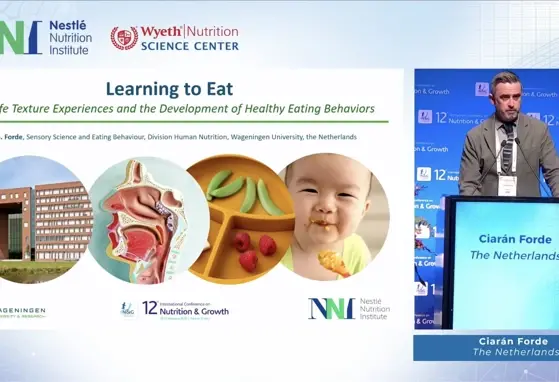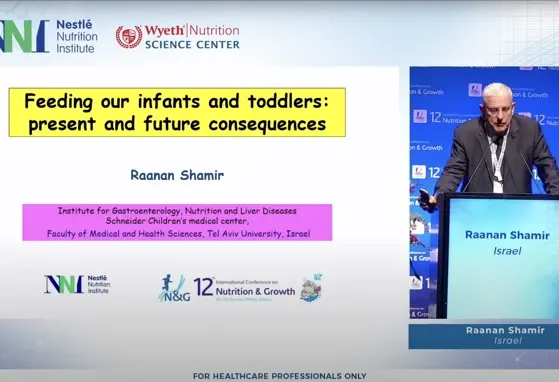French Fries Are No. 1 Vegetable Consumed by Toddlers, Finds Landmark Study
More than a quarter (27 percent) of young children do not consume a single discrete serving of vegetables on a given day, according to the latest findings from the landmark Feeding Infants and Toddlers Study (FITS). Among the toddlers who do, French Fries are the No. 1 vegetable consumed, show the FITS findings, which have just been published in a series of eight papers in the Journal of Nutrition, a publication of the American Society for Nutrition.
According to FITS, food choices tend to change and more nutrient gaps appear after a child's first birthday, when most begin eating more family foods. By age two, many children have established taste preferences and eating habits that will last a lifetime, which is why pediatricians and public health experts urge parents to help their children set healthy eating behaviors early.
"Good nutrition during a child's early years is particularly critical because it sets the stage for healthy eating throughout life," said Wendy Johnson, Ph.D., M.P.H., R.D., Vice President, Nutrition, Health and Wellness for Nestlé USA. "Exposing young children to a rainbow of fruits and vegetables, and a variety of foods and flavors, is important as children are forming their tastes and eating habits for life."
FITS is the largest dietary intake study in the United States focused on infants, toddlers and preschoolers. Nearly 10,000 parents and caregivers of children under age four have been surveyed over three FITS studies, which Gerber began in 2002. FITS is now conducted by Nestlé Research in Lausanne, Switzerland with a team of leading independent pediatric experts and nutrition scientists from academic, medical, government and research institutions. As part of the company's Nestlé for Healthier Kids initiative to help 50 million children lead healthier lives by 2030, FITS helps to build, share and apply nutritional knowledge.
"The latest FITS data confirm that more work is needed to improve the diets of young children, and gives us insight into areas we must focus on to foster healthy eating habits," said Johnson.
Other new FITS findings reveal that troubling nutrient shortfalls start early and many young children consume sweets and excess sodium:
- Iron: The percentage of infants between 6 and 12 months old who do not consume the recommended amount of iron has increased from 7.5 percent in 2002 to 18 percent in 2016. Iron is a critical nutrient to support learning ability and brain development. Beef and iron-fortified cereal are excellent sources of iron.
- Vitamin D: Fewer than 25 percent of infants get the recommended amount of vitamin D, which the body needs for strong bones and teeth. The American Academy of Pediatrics recommends a daily vitamin D supplement for infants who are exclusively breastfed or receive less than a liter of infant formula per day. Similarly, about 80% of 1- to 3-year-olds fall short on vitamin D. Milk and yogurt are good food sources of vitamin D.
- Fiber: Fewer than 10 percent of children 12 to 48 months old get adequate amounts of dietary fiber. Fiber is found in whole grains, fruits, vegetables, lentils and beans.
- Sodium: Forty percent of 1-year-olds and 70-75 percent of 2- to 3-year-olds exceed the upper limit for sodium. Processed meats like hot dogs, lunch meat, sausage and bacon are leading sources of sodium among young children. These foods also contribute saturated fat to their diets.
- Sugar-sweetened beverages: About 10 percent of infants 6-12 months, 30 percent of 1-year-olds and 45 percent of 2- to 3-year-olds drink sugar-sweetened beverages on a given day, with fruit flavored drinks being the most common.
Help kids eat more veggies and fruit
Parents should keep in mind that it might take several tries – in fact up to 10 or more – for kids to accept a new food. Keep offering veggies and fruit, and try these ideas.
- Offer a rainbow of veggies
- For infants: include pureed or mashed peas, sweet potatoes, carrots, butternut squash, and green beans.
- For toddlers and preschoolers: consider mashed or small, soft cooked dices of sweet potatoes, peas, green beans, carrots, red peppers or zucchini.
- At mealtime, finger foods including red/green pepper slices, cooked broccoli pieces and cucumber slices can spark some kid-friendly creativity.
- Need some new side dishes they'll love? Bake "fries" from a variety of vegetables including zucchini, eggplant, carrots and butternut squash.
- Try double dipping at snack time – dip small bite sized veggies in veggies – like mild salsas, or try a bean dip, guacamole or hummus.
- Increase children's fruit consumption to get important nutrients they need
- Offer fruit at meals and snack time, including fresh, frozen, jarred and canned versions.
- Try mixing fruit into your child's yogurt or whole grain cereal.
- Get creative with a fruit smoothie for a refreshing treat on a hot day.
Enhancing food policy discussions with FITS data
The latest FITS findings are well-timed to inform food policy discussions, including the development of the Dietary Guidelines for Americans 2020-2025, which will include comprehensive dietary guidance for infants and toddlers (from birth to age 24 months) for the first time ever, as well as women who are pregnant. They will also help inform reconsideration of the benefits offered in the Special Supplemental Nutrition Program for Women, Infants and Children (WIC) food package, which was last revised in 2009.
"While academic organizations and the public health community have invested significantly in improving children's food choices amidst the obesity epidemic, the conversation needs to start earlier, with focused efforts on infants and toddlers through education and interventions with proven benefits," said Dr. Ryan Carvalho, M.D., Medical Director at Gerber. "Now is the time to halt the rise of childhood overweight and obesity by supporting healthy behaviors in our youngest children as their eating habits and food preferences are being formed."
Emily B Welker, Emma F Jacquier, Diane J Catellier, Andrea S Anater, Mary T Story; Room for Improvement Remains in Food Consumption Patterns of Young Children Aged 2–4 Years, The Journal of Nutrition, Volume 148, Issue 9S, 1 September 2018, Pages 1536S–1546S
If you liked this post you may also like


Learning to Eat: Early life texture experience in the development of eating behaviors and dietary patterns


Feeding our infants and toddlers: present and future consequences